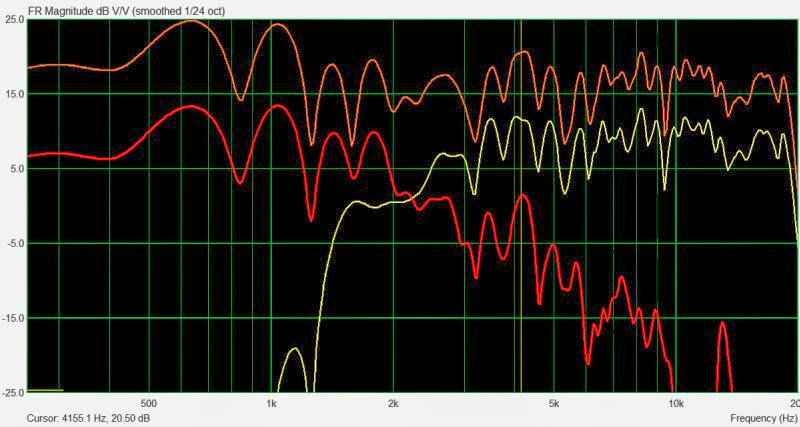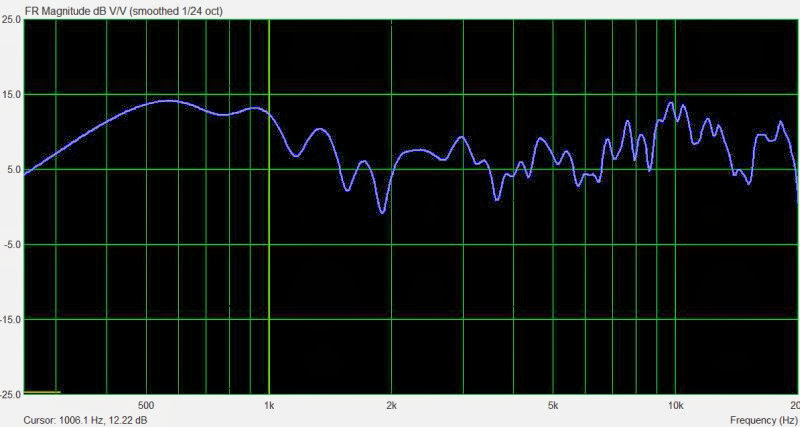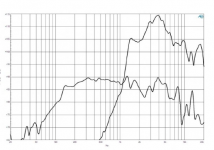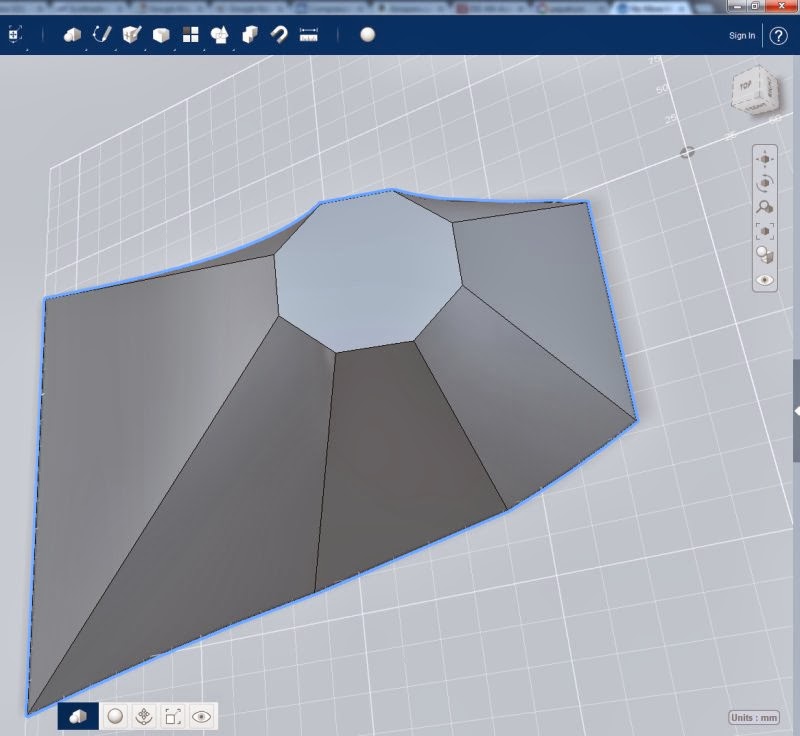
Here's the 3D representation of the waveguide, modeled in Autodesk 123d. (free!)

Here's the printout of the horn, made with Papercraft 3D and Xara Photo & Graphic Designer

Here's the waveguide mold coming together. I've included a big QSC horn to give an idea of the scale - it's big! About 16" x 24". One thing that I did differently is that the waveguide is cut down the center; this is done to reduce the depth of the horn, and also for cosmetics.

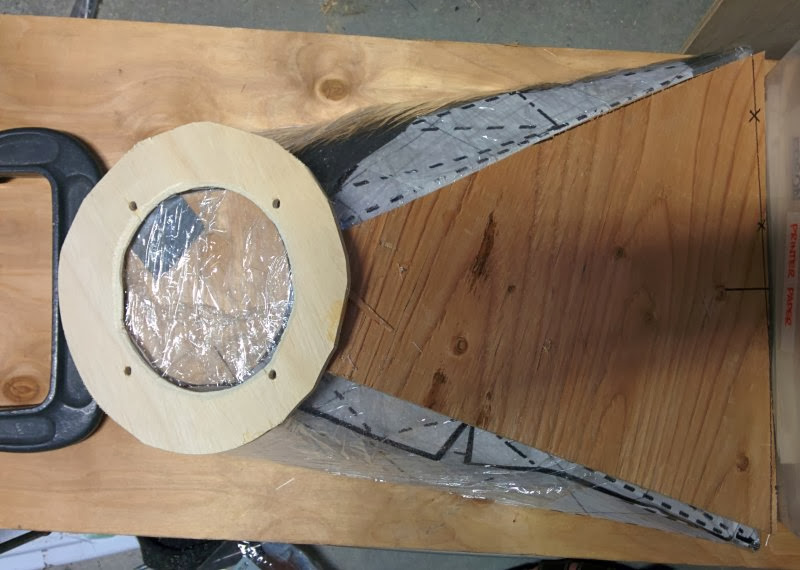
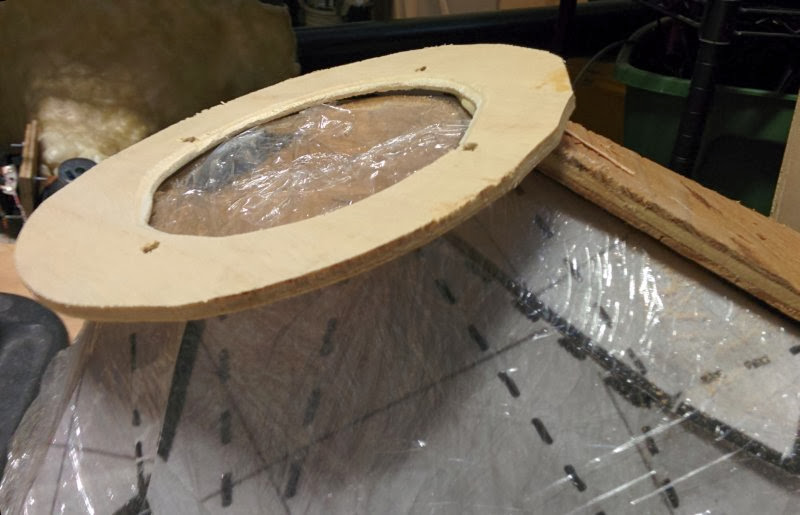
I generally find that it's a good idea to add wood to a fiberglass horn; it adds a lot of strength. So the mounting plate and the largest panel is plywood.
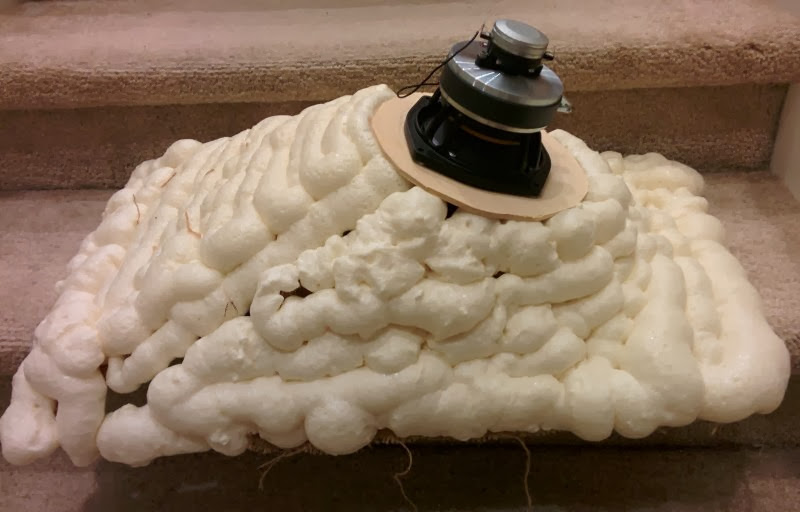

The driver is a B&C 5FCX44. It's a neat driver; it allows you to build a Synergy horn for under $200 a channel. B&C 5FCX44 5" Professional Coaxial Speaker 70° x 70° 8 Ohm | 294-5760
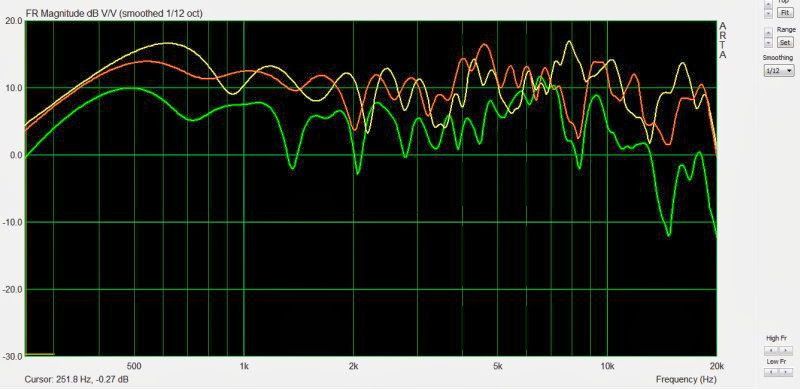
Here's the polar response on axis, 22.5 degrees off axis, and 45 degrees off axis.
Crossover points are at 20khz on the compression driver and 1khz on the woofer, with a little bit of EQ. The crossover points are spaced apart due to the high frequency rolloff of the compression driver. Basically when you combine a very high crossover with the existing rolloff, you get something that's close to flat. The end result is an acoustic crossover around 2khz, but the compression driver's excursion has been reduced dramatically by that point. Filters are 1st order.

Here's the polar response on axis, 22.5 degrees off axis, and 45 degrees off axis.
Crossover points are at 20khz on the compression driver and 1khz on the woofer, with a little bit of EQ. The crossover points are spaced apart due to the high frequency rolloff of the compression driver. Basically when you combine a very high crossover with the existing rolloff, you get something that's close to flat. The end result is an acoustic crossover around 2khz, but the compression driver's excursion has been reduced dramatically by that point. Filters are 1st order.
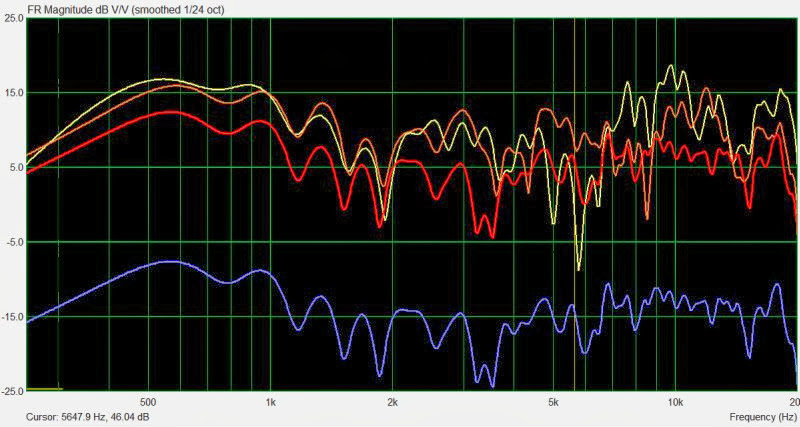
Here's the frequency response, with a few tweaks:
1) I added some clay to the throat to smooth it out (if you look at the earlier pics, the transition near the driver wasn't so hot.) The clay improved the response above 5khz, and it also made the polars more consistent.
2) After adding the clay I remeasured the response and modified the crossover and eq
In the pic above, yellow is 0 degrees, orange is 22.5 degrees off axis and red is 45 degrees off axis. Blue is the average of all three, shifted on the graph to make it more legible. After doing these measurements I added a bit of EQ to address the 6dB 'hump' around 550hz.|
Ive been modeling that driver in a synergy as well, more in line with what Danley does though, instead of the mouth being over the whole cone, the throat goes down into the compression driver exit.
Is the dustcap/screen easily removable? Hard to tell from the pics.

You can't tell from the pics at Parts Express, but the B&C is virtually identical in geometry to the BMS 5" coax. There's a porous dustcap that covers up the waveguide's exit, which makes it hard to see the waveguide.
You can remove the dustcap with an xacto knife. Looks like it would come off cleanly.
Thanks for another interesting documentary Patrick! Is this primarily geared towards car audio, or would this also work for home rooms and larger?
It's certainly food for thought, as I had wondered if anyone had taken this approach (coax driver(s) being placed in a "synergy" horn)!
It's certainly food for thought, as I had wondered if anyone had taken this approach (coax driver(s) being placed in a "synergy" horn)!
The B&C 5FCX44 HF driver appears to drop off around 1500 Hz at more than 24 dB per octave.How low do you think the Compression driver is capable of going? I cat really get the mid up past 1.2k in hornresp.
With the correct size ports it should not be a problem getting the woofer portion well above that point, Patrick's speaker size waveguide is only rolling off at around 12 dB per octave above 2000 Hz.
That said, the response of the 5FCX44 is really ragged, and horn loading only makes the response rougher.
Attachments
An externally hosted image should be here but it was not working when we last tested it.
You can't tell from the pics at Parts Express, but the B&C is virtually identical in geometry to the BMS 5" coax. There's a porous dustcap that covers up the waveguide's exit, which makes it hard to see the waveguide.
You can remove the dustcap with an xacto knife. Looks like it would come off cleanly.
I found a light and tried to take a better pic of the B&C.
You can get a better idea of the transition from the horn's throat to the woofer cone. It looks really well done to me, I think this plays a part in why it sounds so good. The accordian surround of the BMS will be a better match for a horn or waveguide.
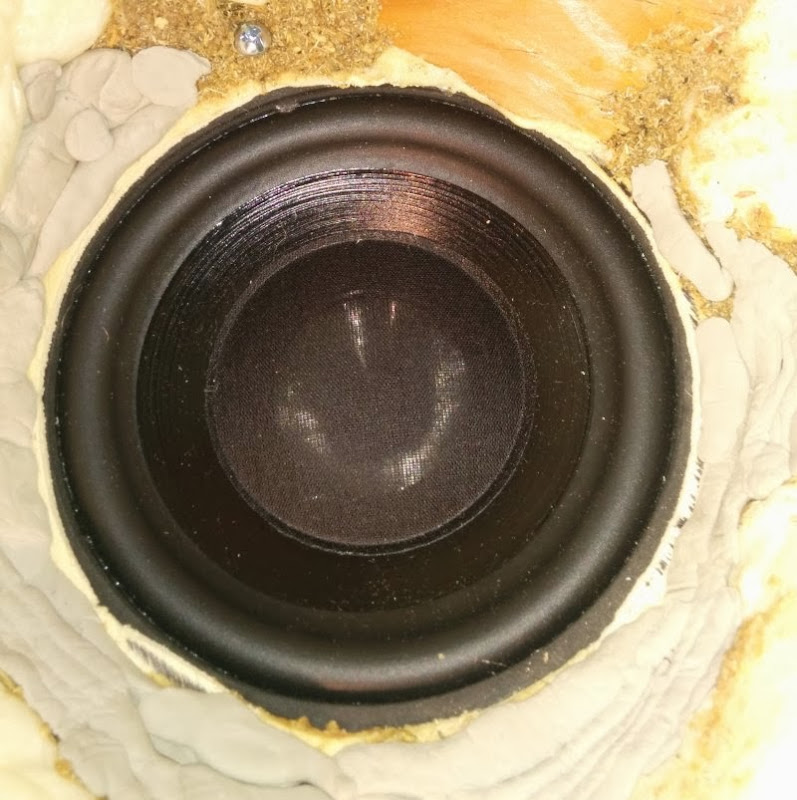
"Well done"?I found a light and tried to take a better pic of the B&C.
You can get a better idea of the transition from the horn's throat to the woofer cone. It looks really well done to me, I think this plays a part in why it sounds so good. The accordian surround of the BMS will be a better match for a horn or waveguide.
Looks more like "half baked" to me
By the way, the BMS has a half roll, the B&C has an accordion surround.
"Well done"?
Looks more like "half baked" to me.
By the way, the BMS has a half roll, the B&C has an accordion surround.
I'm talking about the transition from the high frequency horn to the horn that's formed by the cone of the woofer. That's well done; B&C did a good job.
My craftsmanship is sloppy as hell, as always.

An externally hosted image should be here but it was not working when we last tested it.
Here's an example of what I mean. In the B&C, it's hard to see, but the transition from waveguide to cone is about as smooth as it gets.
OTOH, the second coax, from Hemp Acoustics, has an abrupt transition that will generate diffraction.
- Status
- This old topic is closed. If you want to reopen this topic, contact a moderator using the "Report Post" button.
- Home
- Loudspeakers
- Multi-Way
- Together as One
